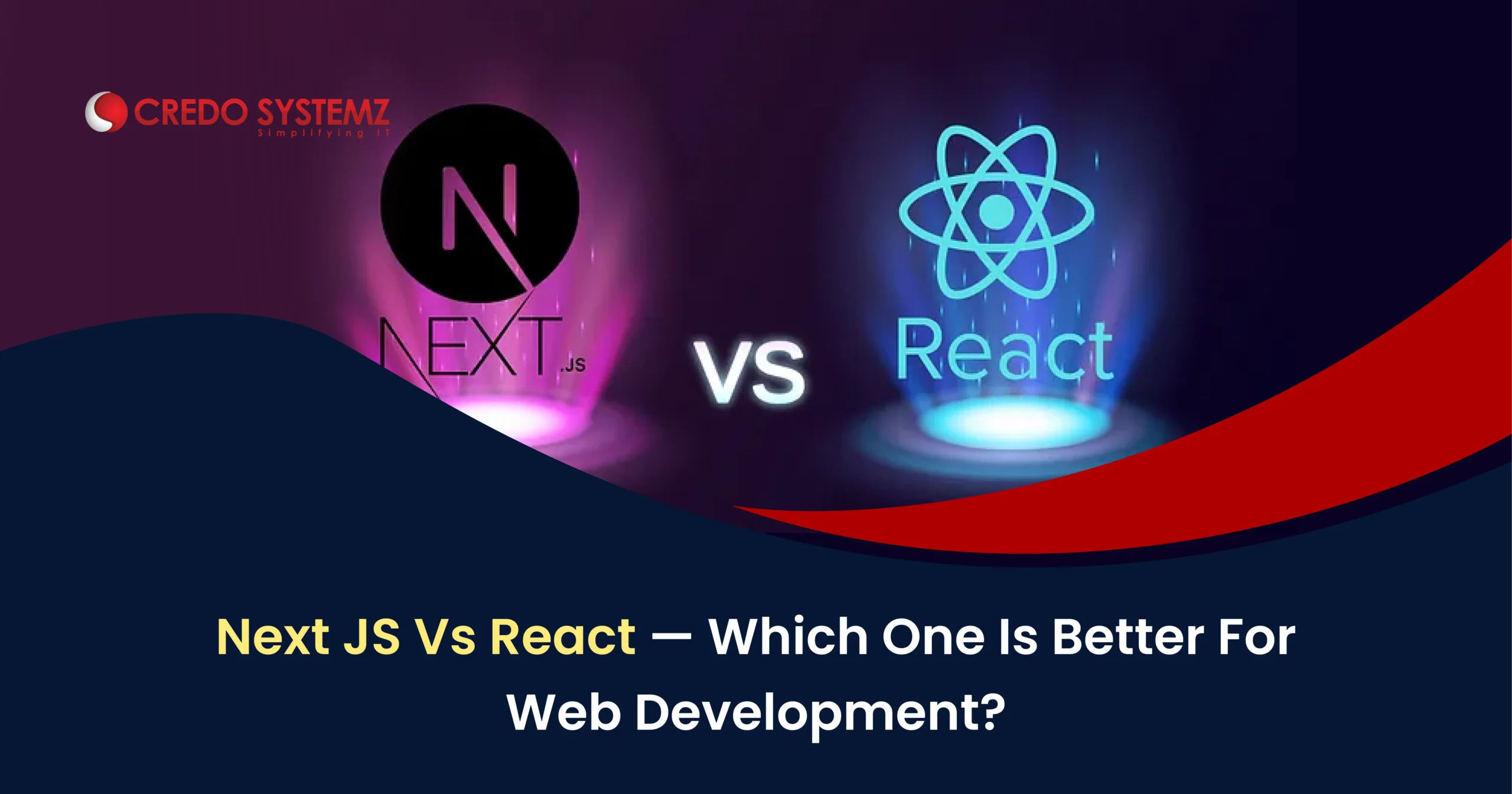
Introduction
In the development process of modern web applications, the names that dominate in the developer discussions are React and Next.js. These are powerful tools used widely in the industry which serve different purposes.
React
React is the popular JavaScript library which is widely used for building user interfaces, especially for single-page applications. It allows developers to:
- Create reusable UI components,
- Manage complex UIs efficiently.
Key Features of React
The important features of React are:
- Component-based architecture
- Virtual DOM for fast rendering
- Unidirectional data flow
- Large ecosystem and community support
React is suitable for building dynamic front-end UI, customizing routing, bundling, and server configuring manually. It offers full control over your app’s architecture.
Next.js
Next.js is a very popular React-based framework that is used for building full stack applications. It extends React by adding many powerful features, such as routing, server-side rendering, and static site generation.
Key Features of Next.js:
The various features of Next.js are:
- Built-in routing,
- Server-side rendering (SSR) and static site generation (SSG),
- Image optimization and automatic code splitting,
- SEO-friendly,
- API routes.
Next.js can be used to build full-stack applications, improve SEO with server-side rendering. It is effective for creating faster-loading websites with static generation and avoiding setting up complex configurations.
React vs Next.js: Feature Comparison
| Feature | React | Next.js |
|---|---|---|
| Type | JavaScript library | Full-stack React framework |
| Routing | Manual with React Router | Built-in file-based routing |
| Server-side rendering | Needs custom setup | Built-in support |
| Static site generation | Needs third-party tools | Built-in (getStaticProps, etc.) |
| SEO | Less SEO-friendly | SEO-optimized out of the box |
| Backend APIs | Requires separate backend | API routes supported |
Which One Should You Choose?
React is appropriate for building a front-end-only single-page app (SPA) with more flexibility and control over your tooling. It is right choice for beginners who are looking to learn the basics of component-driven UI.
Choose Next.js if you are building a full-stack app with both frontend and backend logic. It ensures better performance, SEO and server-side rendering.
Which is Better for Web Development?
Both React and Next.js are excellent choices for most modern web development in 2025, Next.js is the better option. It offers out-of-the-box optimization, flexibility, and scalability. Next.js is ideal for production-grade applications, SEO-critical websites, SaaS dashboards and developer portfolios.
React is used for frontend-only apps or in projects with separate backend services. However, learning React first is highly recommended as it is the foundation of Next.js. After getting comfortable with React, transitioning to Next.js becomes much easier.
Final Thoughts
If you’re building a quick UI project or learning front-end development, start with React. But if you’re ready to build a full-featured, high-performance website or app, Next.js is best. To learn about React and Next.js, join our React training course and Next.js course in Chennai.
Join Credo Systemz Software Courses in Chennai at Credo Systemz OMR, Credo Systemz Velachery to kick-start or uplift your career path.
